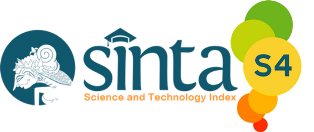Manajemen Keamanan di UPT Perpustakaan Universitas Negeri Semarang
DOI:
https://doi.org/10.21580/jawda.v2i2.2021.9154Keywords:
library security, library management, preservationAbstract
Library security is an important factor for the continuity of library administration, without good security management, the library cannot guarantee that its users feel safe and comfortable in utilizing the library, and eventually the library is abandoned by its users. This study aims to describe security management at the Library of Semarang State University (UNNES) which is still in the old UNNES Library building. The method used is descriptive qualitative with observation and interview data collection techniques. The validity test uses technical triangulation, and data analysis uses data reduction, data presentation, and drawing and conclusions. The results found were that the UNNES Library had implemented security features in the form of physical security and security management. Physical security includes placement architecture, building architecture, guards, equipment and exhibition security, while security management includes library material security, access security and surveillance cameras. Weaknesses found in the UNNES Library were that security policy procedures and plans had not been set forth in text form even though they had been implemented. Suggestions for UNNES Library is to be able to make security policy procedures and plans in the form of text that is approved by the leadership and can be a guideline for the library.Downloads
Downloads
Published
Issue
Section
License
Authors who publish with this journal agree to the following terms:
Authors are able to enter into separate, additional contractual arrangements for the non-exclusive distribution of the journal's published version of the work (e.g., post it to an institutional repository or publish it in a book), with an acknowledgement of its initial publication in this journal.
Authors are permitted and encouraged to post their work online (e.g., in institutional repositories or on their website) prior to and during the submission process, as it can lead to productive exchanges, as well as earlier and greater citation of published work (See The Effect of Open Access).












